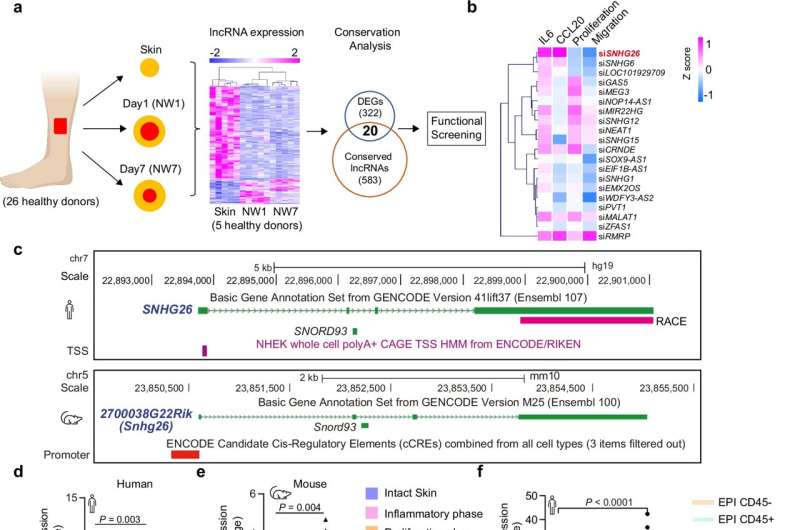Researchers from Karolinska Institutet and the Chinese Academy of Medical Sciences have made a groundbreaking discovery in the field of wound healing. They have identified a key RNA molecule, SNHG26, that plays a crucial role in guiding skin cells through the various stages of wound healing – from the inflammatory phase to the tissue regeneration phase. This discovery could pave the way for new therapeutic approaches to treat both acute and chronic wounds, particularly in cases where prolonged inflammation is a major issue.

Unraveling the Molecular Mysteries of Wound Healing
The human body is a remarkable and complex system, capable of healing itself in the face of injury or damage. The process of wound healing is a delicate balance between various stages, including inflammation, tissue regeneration, and ultimately, the restoration of the skin’s barrier function.
In this groundbreaking study, researchers from Karolinska Institutet and the Chinese Academy of Medical Sciences have shed new light on the molecular mechanisms that govern this intricate process. By mapping the landscape of long non-coding RNA (lncRNA) molecules in human skin wounds, they have identified a key regulator – the lncRNA molecule SNHG26 – that plays a pivotal role in guiding skin cells through the different stages of wound healing.
Harnessing the Power of Long Non-Coding RNA for Therapeutic Advancements
The discovery of SNHG26’s importance in wound healing is a significant step forward in our understanding of the complex biological processes involved. The researchers have not only identified this key molecule but also delved deeper into its interactions with genes involved in inflammation and tissue regeneration.
Interestingly, in mice lacking the SNHG26 molecule, the researchers observed a delay in wound healing, underscoring the critical role this lncRNA plays in maintaining the delicate balance between inflammation and tissue repair. This finding opens up new avenues for potential therapeutic interventions, as targeting SNHG26 could be a promising strategy to accelerate healing and reduce complications, particularly in cases of chronic wounds where prolonged inflammation is a major challenge.
Pioneering Innovations in Wound Care: Regulatory RNA Molecules Take Center Stage
The researchers at Karolinska Institutet are at the forefront of exploring the role of regulatory RNA molecules, including lncRNAs and microRNAs, in controlling the healing processes of the skin. Their work highlights the immense potential of these molecules in developing innovative treatments for hard-to-heal wounds.
Going forward, the research team plans to delve deeper into the involvement of other regulatory RNA molecules in the tissue repair process. By unraveling the complex interplay between these molecules and the various stages of wound healing, they aim to pave the way for groundbreaking advancements in wound care. The ultimate goal is to translate these findings into practical applications that can significantly improve the lives of individuals suffering from acute and chronic wounds, ultimately transforming the way we approach wound management and treatment.
